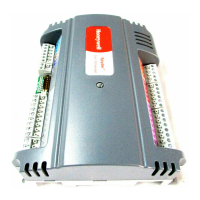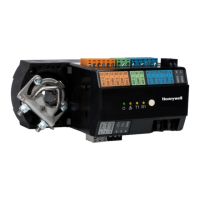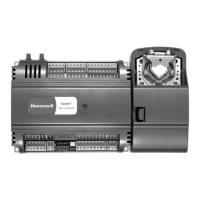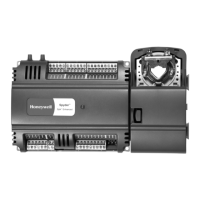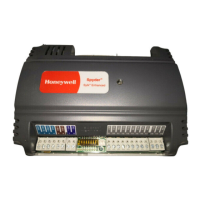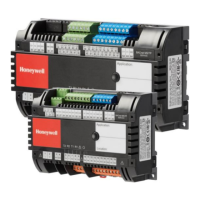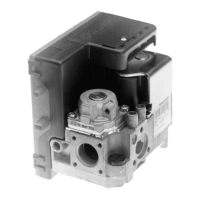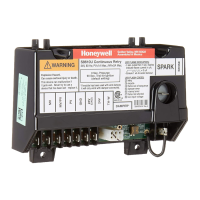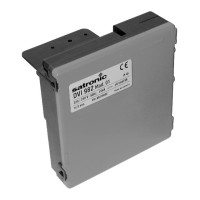SPYDER MODEL 7 VAV CONTROLLER INSTALLATION INSTRUCTIONS
31-00475-01 12
Airflow Sensor Connection
Connect the airflow pickup to the two restrictor ports on
the controller.
NOTE:
Use 1/4 in. (6 mm outside diameter and 5 mm
inner diameter), with a 3/64 in. (1 mm) wall thick-
ness, plenum-rated 1219 FR (94V-2) tubing.
You should always use a fresh cut on the end of
the tubing that connects to the air flow pickups
and the restrictor ports on the controller. Secure
the connection using a zip tie (procured locally).
When twin tubing is used from the pickup, split the
pickup tubing a short length to accommodate the
connections.
Fig. 11 Airflow Pickup Connections
NOTE:
The sensor is not polarity sensitive for the VAV
application. The tubing can be attached to either
of the ports since it is bidirectional.
If desired, the application can use it polarity-sen-
sitively based on the + and - markings on the con-
troller.
Differential Pressure Installation
Recommendations
The Spyder Model 7 VAV must be powered up for a
minimum of an hour before performing the zero
calibration.
The tubing from the airflow pickup to the controller
should not exceed 3 ft (1 m). Any length greater than
this will degrade the flow sensing accuracy.
Use caution when removing tubing from the connector.
Always pull straight away from the connector or use
diagonal cutters to cut the edge of the tubing attached
to the connector. Never remove by pulling at an angle.
NOTE:
• Dust particle contamination may be present in
some applications. Take appropriate steps to limit
particulate contamination.
• The sensing element is parallel to the air stream
and tends to direct the dust particles in the airflow
stream past the sensing element away from the
sensing bridge.
• The sensing element is a micro-structure-based
device. Two platinum sensing elements and a
heater are used in the bridge part of the sensing
element assembly. The heater repels dust parti-
cles due to a thermophoretic action. It keeps the
majority of the dust off the bridge structure. The
heat effect, along with a simple filter, can help
keep the dust from causing output shifts in the
device's output.
• Although the sensor naturally repels dust, some
dust and contamination can still collect on the
micro structure. Dust adherence to chip edges
and channel surfaces can be prevented by using a
simple filter. A disposable five-micron filter used
in series on the upstream side of the airflow divide
will provide adequate filtering in most applica-
tions.
122°F
(50°C)
32°F
(0°C)
± 2.0 HO
(±500 Pa)
Air, N2, O2
non-condensing
Secure with
cable tie
0.20” (5.2 mm)
0.13” (3.5 mm)
0.31 in (8 mm)
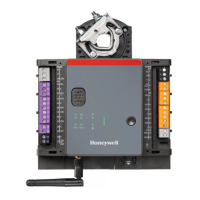
